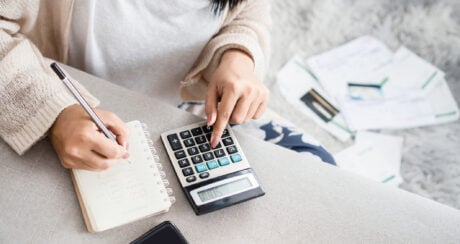Just like there are withdrawal and transfer limits on debit cards, banks sometimes set a daily spending limit on credit cards. Your daily limit is separate from the card’s regular credit limit, which reflects the maximum credit your card offers you.
A credit card daily spending limit is your daily transaction limit — the combined value of your purchases for those 24 hours — whether in-store, contactless payments, recurring transactions, or purchases made online or over the phone.
You might have a credit limit of $20,000 but a daily transaction limit of $10,000. That means you cannot exceed $10,000 worth of transactions on any given day, even though that doesn’t use up all the available credit.
How do daily limits work?
You can spend up to the limit on your credit card per day, whether as one transaction or multiple. The daily spending limit is usually lower than your credit card limit. These limits protect against fraud and prevent you as the cardholder — or someone who stole your card — from using up your whole credit limit in one day.
If you reach your spending limit for that day, your credit card company will decline the next transaction made. Sometimes, you might also see an over-limit fee for exceeding this spending limit. Check the terms and conditions of your card to be sure.
» MORE: Credit card fees to know and avoid
Types of credit card limits
Your daily spending limit is the total amount you can spend on any given day.
Daily spending limits are separate from other flexible and often temporary ways to control your spending or toggle your available funds.
Example: CommBank has a Spending Cap feature that lets cardholders temporarily restrict spending on their credit card for a short time — during a night out, for an overseas trip or even while paying down debt.
Other limits include:
- Daily payment limit: The total amount paid daily through online banking across all your accounts. For example, you can update this Daily Payment Limit at Westpac.
- Daily cash advance limit: Banks set daily limits on cash advances — usually up to $2,000 — which may happen if you use your credit card to withdraw cash at an ATM, for example. These transactions are subject to higher interest charges and also incur a high fee — often up to 3 per cent.
- Total credit limit: The maximum amount that can be borrowed at any given time until you repay the debt to make your balance available again.
Do all credit cards have daily spending limits?
Many, but not all, credit cards have a default daily limit, but it’s higher than a typical day of transactions unless you’re buying a high-ticket item, like furniture or a vacation. For example, the daily limit for a Heritage Bank Visa credit card is $10,000.
Banks aren’t required to set daily limits, but you can request one.
How to find, change or set a credit card spending limit
For most consumers, daily spending limits aren’t as important as the card’s credit limit. Knowing your credit card’s daily spending limit is handy if you plan to make a significant purchase. Check your available credit, daily limit, and any restrictions that might impact the transaction.
You can find, set or change your daily limit by:
- Online and mobile banking: Navigate to your credit cards and check or change any limits.
- Phone: Call your bank’s customer service to discuss any limits with a representative.
- Online chat: Many banks now have a 24/7 chat function where you can ask questions.
Keep in mind it’s easier to decrease than increase credit limits. If you’re unsure how changing a credit daily spending limit will affect you, talk to your bank first.
Other ways to control your credit
There are various temporary and permanent measures or ways to manage your credit limit and daily spending:
- Use bank features. Start by exploring what your bank offers through online banking or in the mobile app to restrict or switch off usage.
- Experiment with DIY measures. Controlling your spending with a budget, setting up alerts for large transactions and using money management apps can help prevent overspending. You can also try leaving your credit card at home, out of reach or with a trusted loved one unless you know you’ll need it for a specific purchase.
- Reduce your credit limit. All types of limits — whether daily spending or general — aren’t fixed on cards. So, if you’re not worried about access to as much available credit, talk to your bank about your situation to find the right balance. The credit limit you can comfortably control is the best one for you.
🤓 Nerdy Tip
Understanding your credit limits is essential to using your credit card responsibly. Use them to make better financial decisions, avoid fees and manage your money. Review your limits annually to ensure they still suit your current financial goals and needs. It pays to be proactive with all the requirements for your credit card.
DIVE EVEN DEEPER

What Is A Credit Card Minimum Payment?
A credit card minimum payment is the minimum amount owed on your credit card statement’s closing balance. It’s typically 2% of the debt owed.

What Is a Charge Card?
Charge cards don’t have preset spending limits like credit cards and require full balance payment each month.

Credit Card Vs. Debit Card: Differences, Benefits and Uses
Credit cards are short-term loans that must be repaid, and debit cards are linked to your bank account and spend your own money.

How Do Credit Card Interest Rates Work?
Everything you need to know about credit cards to use them responsibly.

